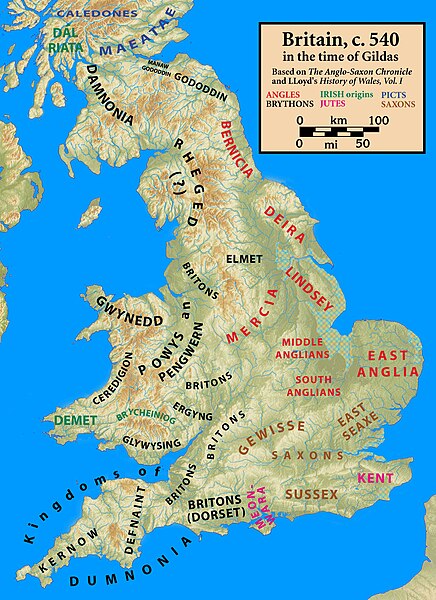The Kingdom of the South Saxons, today referred to as the Kingdom of Sussex, was one of the seven traditional kingdoms of the Heptarchy of Anglo-Saxon England. On the south coast of the island of Great Britain, it was originally a sixth-century Saxon colony and later an independent kingdom. The kingdom remains one of the least known of the Anglo-Saxon polities, with no surviving king-list, several local rulers and less centralisation than other Anglo-Saxon kingdoms. The South Saxons were ruled by the kings of Sussex until the country was annexed by Wessex, probably in 827, in the aftermath of the Battle of Ellendun. In 860 Sussex was ruled by the kings of Wessex, and by 927 all remaining Anglo-Saxon kingdoms were ruled by them as part of the new kingdom of England.
A coin from the Patching Hoard was a gold solidus struck in the name of Severus III
Harold Godwinson, the future king of England, shown on the Bayeux Tapestry riding with his knights to Bosham from where he set sail in 1064.
Remains of the burh wall at Burpham
Droveways such as this one near Chanctonbury Ring were used throughout the Saxon period to transport pigs and cattle between coastal areas and summer pasture in the Weald
History of Anglo-Saxon England
Anglo-Saxon England or Early Medieval England, existing from the 5th to the 11th centuries from soon after the end of Roman Britain until the Norman Conquest in 1066, consisted of various Anglo-Saxon kingdoms until 927, when it was united as the Kingdom of England by King Æthelstan. It became part of the short-lived North Sea Empire of Cnut, a personal union between England, Denmark and Norway in the 11th century.
Britain around the year 540. Anglo-Saxon kingdoms' names are coloured red. Britonnic kingdoms' names are coloured black.
Escomb Church, a restored 7th-century Anglo-Saxon church. Church architecture and artefacts provide a useful source of historical information.
Whitby Abbey
The walled defence round a burgh. Alfred's capital, Winchester. Saxon and medieval work on Roman foundations.








